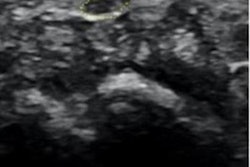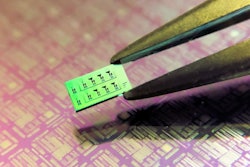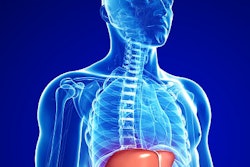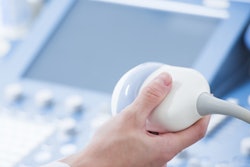
Ultrasound imaging shows promise as a painless way to diagnose carpal tunnel syndrome, according to the findings of a small study published on September 11 in Academic Radiology. A combination of ultrasound features produced high accuracy, sensitivity, and specificity in the study.
Carpal tunnel syndrome is often diagnosed with the aid of electrodiagnostic tests, which can be painful for patients. The new study suggests that ultrasound may be a pain-free and cost-effective alternative for patients.
Building upon prior research, the authors found that ultrasound features like cross-sectional area (CSA) and stiffness and vascularity of the median nerve accurately differentiated between patients with and without carpal tunnel syndrome.
"The [median nerve] stiffness, CSA, and vascularity of [median nerve] showed a high diagnostic performance for diagnosing [carpal tunnel syndrome] independently or in combination; albeit based on a small sample size," wrote the authors, led by Kibo Nam, PhD, an associate professor of radiology at Thomas Jefferson University in Philadelphia.
Researchers have evaluated various ultrasound features for identifying carpal tunnel syndrome in patients. Cross-sectional area has looked particularly promising as a diagnostic tool because symptomatic patients have an enlarged area due to edema and fibrous tissue proliferation.
However, CSA on its own often results in a sensitivity and specificity of under 90%. The authors hypothesized that its effectiveness could be improved by adding other ultrasound features.
Their study included 27 wrists with carpal tunnel syndrome and 20 healthy wrists from 25 total volunteers. All patients underwent strain elastography and shear-wave elastography while sitting with their arm extended and palm facing up.
The authors imaged patients' median nerve at two sites: (1) proximal carpal row and (2) pronator quadratus muscle. They used software built-in to the ultrasound scanners to calculate stiffness and CSA and an offline Matlab script to measure vascularity.
All studied ultrasound features differed significantly between patients with and without carpal tunnel syndrome. Out of the independent features, CSA had the highest diagnostic value, with an accuracy of 94%, specificity of 100%, and sensitivity of 85%.
| Accuracy of ultrasound features for diagnosing carpal tunnel | |||
| Ultrasound feature | Specificity | Sensitivity | Accuracy |
| CSA | 100% | 85% | 94% |
| Color Doppler imaging | 80% | 84% | 84% |
| Stiffness (site 1) | 80% | 85% | 84% |
| Stiffness (site 2) | 65% | 78% | 72% |
However, the results further improved when the authors combined the CSA measurements with other ultrasound features. A model that combined CSA with stiffness at the pronator quadratus muscle had an accuracy of 95%, specificity of 100%, and sensitivity of 93%.
Similarly, a model that combined CSA, stiffness at either of the measured sites, and color Doppler imaging measurements yielded an accuracy of 96%, specificity of 100%, and sensitivity of 93%.
| Accuracy of combined ultrasound features for carpal tunnel | |||
| Ultrasound features | Specificity | Sensitivity | Accuracy |
| CSA + stiffness (site 1) | 100% | 93% | 96% |
| CSA + stiffness (site 2) | 100% | 93% | 95% |
| CSA + stiffness (either site) + color Doppler imaging | 100% | 93% | 96% |
While the results look promising, there are a number of caveats with the research. Notably, the diagnostic accuracy of CSA alone was markedly higher than the values found in other studies. For instance, one meta-analysis cited in the paper found CSA had a pooled specificity of 83% and sensitivity of 87%.
The authors attributed the high diagnostic accuracy of CSA in their study to high-frequency imaging. But they also noted that when CSA alone is such an accurate diagnostic metric, the outcomes aren't as drastically improved by adding other ultrasound features.
The study also had a small sample size, and the ultrasound features could not distinguish between patients with mild, moderate, and severe forms of carpal tunnel syndrome.
Nevertheless, the authors highlighted the promise of using ultrasound features, alone or in combination, as a painless method to diagnose carpal tunnel syndrome. In fact, the results look especially promising when compared with electrodiagnostic tests, which have a sensitivity of 80%-92% and specificity of 80%-99%, according to the authors.
"Although the ultrasound features did not differentiate all the stages of [carpal tunnel] severity, this study suggests the further validation of ultrasound features and standardization of assessment criteria for the use of ultrasonography as a supplement screening tool for [carpal tunnel syndrome]," the authors concluded.



















